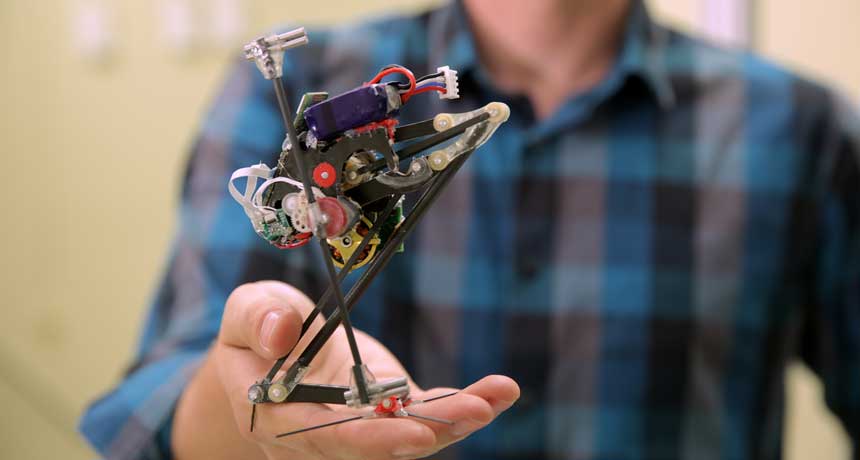
SUPER JUMPER A little robot named Salto is an agile jumper that relies on a twisted latex spring to gain extra height. One day, robots like it could bound across rubble in search-and-rescue operations.
Stephen McNally and Roxanne Makasdjian/UC Berkeley






